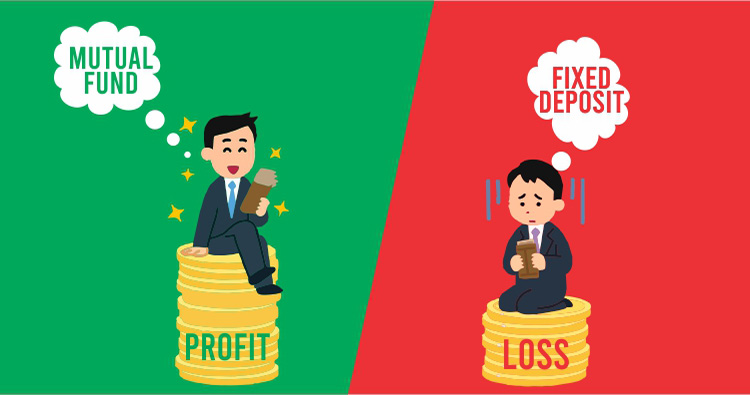


Do you suffer from Loss Aversion bias?
Losses pinch us harder than gains. Whether it is a loss of a friend or losses in investing, losses tend to have larger control over our lives.
We may like to think that we make sound decisions, especially when it comes to investment, but it is far from the truth. We give undue importance on the losses relative to the gains. Most investors are more risk-averse than necessary. As a result, investment decisions are flawed. In behavioural finance, this scenario is called the loss aversion bias.
However, it should be noted that loss aversion bias does not signify total risk aversion. A certain degree of risk aversion is good for the portfolio and your overall financial well being.
One example of loss aversion bias that is widely prevalent in the Indian context is the love for fixed deposits. As fixed deposits give a certain fixed interest rate over a course of time, it is widely accepted by individuals. However, fixed deposits may not be an ideal option as it is not tax-efficient and fails to generate higher real returns. Real returns are the returns given by the investment option above the current inflation rate.
While there are other options that give higher returns and are tax-efficient, individuals still prefer to fixed deposits as they don’t want to take risk. This is a classic case of loss aversion. Due to loss aversion bias, people miss out on the higher returns.
What leads to loss aversion bias?
The psychological impact associated with profits and losses is the primary cause of loss aversion bias. Losing money is twice as much painful than the pleasure of gaining money. To avoid this pain, investors turn risk-averse.
Effects of Loss Aversion bias
Loss Aversion Bias has a large impact on the investment decisions taken by the individual.
Loss Aversion Bias does not let the investor seek out better investment options. It makes an investor stagnant. They resist any change in their portfolio and want it to remain as it was. As a result, they miss out the opportunity to earn higher returns. To them, gaining more is less significant than losing.
Another effect of loss aversion bias is to hold on to their investments for way too long. Such investors hope to average out their costs and have a hard time letting go of their losing stocks. They hold to the stocks to avoid the feeling of loss. However, holding on to these stocks can result in higher losses. Therefore, we see that loss aversion either land up in stagnancy or contribute to more losses.
How to overcome loss aversion bias?
It is difficult to get rid of loss aversion bias as it is deep-rooted in the mind. We are trained to handle losses and gains negatively and losses invoke a negative response. Loss aversion bias can be handled by looking at a scenario in a more objective manner. One should make conscious attempts tosee losses and gains in equal light, without giving undue importance to losses.
It is also important to weigh the losses and gains with respect to their age, investment horizon and financial goals etc.
You think that you are suffering from loss aversion bias, your financial advisor will be able to check and help you on the same.
Family First Capital Private Ltd, B-6/7, 2nd floor, Satyam Shopping Centre, B-Wing, M G Road, Ghatkopar East, Mumbai, Maharashtra, India - 400077
Copyright © Family First Capital Private Limited © 2023 . All rights reserved.